- Create new account
- Reset your password
Register and get FREE resources and activities
Ready to unlock all our resources?

Shang Dynasty
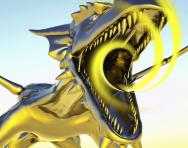
What was the Shang Dynasty?
The Shang Dynasty was the first Chinese dynasty for which we have written and archaeological evidence .
Most historians now date the dynasty from 1600-1046 BC when it was succeeded by the Zhou Dynasty.
The Shang Dynasty was centred around the Yellow River in North East China but moved its capital on a number of occasions. The artistry of its craftsmen has made the dynasty famous for its bronze and jade work.
Top 10 facts
- The first ruler of the Shang was Tang Shang, a military leader. There were thirty Shang Emperors; a dynasty is a succession of rulers from the same family or line .
- The Shang built their houses and public buildings out of wood and mud. They built mud banks to try and hold back flooding. Defensive walls and towers were also built of mud.
- Shang society was divided into different classes . At the top were the ruling class under the royal family , then came priests , an administrative class, warriors, craftsmen, traders, farmers and slaves . Most people were farmers.
- Noble warriors paid tributes to the Emperor who granted them land in return for their loyalty.
- The Shang were specialists in bronze work and many beautiful artefacts have been recovered from their tombs.
- The Shang believed in a supreme God, Shang Di , as well as subsidiary powers or spirits. Ancestor worship and the family were central to their religious practice.They also believed in an afterlife and were buried with the goods, slaves and animals they believed would be useful to them.
- The Shang were the first Chinese to develop writing . They used pictographs , characters which could convey more than one meaning.
- The Shang year of 360 days was comprised of 12 months of 30 days. It was based on the lunar month and the solar year. An additional month was added when necessary.
- In order to predict the future, or ask questions of the gods, people would engrave questions on oracle bones (tortoise shells or cow bones). These would then be burned and the priests would ‘read’ the cracks which then appeared.
- Chinese people used to grind down these ancient animal bones to make traditional medicines . In 1899 some scholars noticed engravings on the bones and discovered they had come from North East China. In 1928 excavations began and evidence of the Shang was discovered.
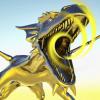
- c1650 BC City States form
- c1500 BC Large scale bronze production occurs
- c1400 BC Capital of dynasty is at Yin, near Anyang
- c1200 BC Death of Lady Fu Hao; spoke-wheeled chariots in use
- 1046 BC End of Shang Dynasty

Boost Your Child's Learning Today!
- Start your child on a tailored learning plan
- Complete the activities added each week
- Watch your child's maths & English confidence grow!
Did you know?
- The Shang dynasty was said to have come to power when Tang Shang defeated the evil King Jie of the Xia Dynasty , but historians believe that the Xia dynasty may be legendary rather than real.
- Tai Wu , the ninth Shang Emperor, reportedly ruled for 75 years.
- Lady Fu Hao was a Shang dynasty queen and military leader who died c1200 BC. She led an army of 10,000 men. Her tomb contains the remains of 16 slaves and six dogs who were sacrificed when she died.
- The Shang enjoyed music and played ocarinas, pipes, drums, chimes, cymbals and bells.
- Emperor Zhou , the last Shang Emperor, was said to have been very cruel. He was overthrown by Wu who became founder of the Zhou dynasty.
- A Shang week lasted ten days.
Look through the gallery and see if you can spot the following:
- Map of Shang Dynasty
- The military leader and ruler Tang of Shang
- Drawing of a Shang palace or temple
- A Bronze battle axe (Credit: Editor at Large, Wikipedia)
- Jade carving of a buffalo
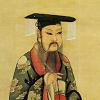
The Shang Dynasty is the first historic dynasty of China . The river valley of the Yellow River provided a fertile area for this civilisation to develop. The area was forested and the Shang used wood to build their homes and public buildings; little has survived of their domestic architecture. Fortunately royal and other tombs have provided many clues as to life under the Shang. Artefacts such as beautifully carved jade and stone, bronze ritual vessels and weapons and domestic items such as the earliest glazed porcelain and woven silk testify to their levels of craftsmanship and artistry.
The Yellow River was unpredictable and prone to flooding. The remains of mud walls tell us about the struggle to keep back the waters of the river during times of flooding. Shang cities were surrounded by defensive walls and gates.
Most of the written evidence we have about the Shang comes from oracle bones, although some bronze and pottery goods also have inscriptions.
The Shang used wheeled carts for transport in times of peace and chariots for hunting and as a means of overseeing warfare. They also used canoes for local trade. Cowrie shells show they traded with coastal dwellers but they did not trade further afield. Roads enabled communication to be maintained between the city states.
The Dynasty lasted for six hundred years and encompassed the reign of thirty emperors.
The Shang are important because they left a legacy of Chinese culture that proved durable and long lasting. The hereditary dynastic succession that they set in place endured for millennia. The role of the family and importance of ancestors remain central to Chinese culture today. Their artistry , with bronze in particular, continues to be admired for its beauty and grace.
Related Videos
Just for fun...
- Visit lots of different workshops in this ancient Chinese street
- Learn to read, write and say some Chinese numbers and words with an Ashmolean Museum worksheet
- Create your own bronze vessel online
- How much do you know about Ancient China? Try a tricky quiz!
- A story about jade
- Take a Shang Dynasty quiz to show off your knowledge
Best children's books about the Shang Dynasty
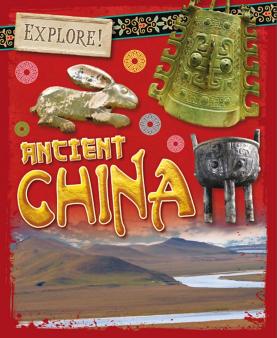
Find out more
- Look through the brilliant BBC Bitesize Shang Dynasty guides about life in China in 1600-1046BC, the Shang people's jobs and army and what oracle bones were used for
- You'll find lots of images and information in the DKfindout! children's guide to Ancient China
- Information about Chinese tombs and ancestors
- Read a guide to the Battle of Muye, between the Shang and the Zhou people
- Find out about the history of silk production
- Learn about King Di Xin, the final king of the Shang Dynasty , in a short video
- Details of the Chinese writing system of logograms (a symbol represents a word or a meaning)
- Read more about Shang Dynasty history
- Find out about archaeological excavations in Yin Xu (in modern-day China's AnYang city)
- Discover how the Shang were the first Chinese people to invent writing in a video clip
- Look through a guide to Chinese bronzes , with lots of pictures and information
- Find out about a Shang Dynasty bronze vessel used to hold wine for ritual sacrifices to the ancestors
See for yourself
- The British Museum has some Shang Dynasty artefacts
- See a slideshow of Shang Dynasty objects from the Metropolitan Museum of Art in New York
- See artefacts from the archaeological site of Yin Xu , the ancient capital city of the late Shang Dynasty
- At Compton Verney’s Chinese galleries in Warwickshire you can see one of the finest collections of ancient Chinese bronzes outside of China
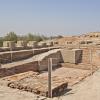
Give your child a headstart
- FREE articles & expert information
- FREE resources & activities
- FREE homework help
If you're seeing this message, it means we're having trouble loading external resources on our website.
If you're behind a web filter, please make sure that the domains *.kastatic.org and *.kasandbox.org are unblocked.
To log in and use all the features of Khan Academy, please enable JavaScript in your browser.
World history
Course: world history > unit 1.
- Shang Dynasty in Ancient China
Shang Dynasty civilization
- Ancient China
- Shang China practice
- The Shang had a number of religious practices, one of which was veneration of dead ancestors; Shang people made sacrifices to and asked questions of their ancestors.
- Ancient Chinese nobles sought to tell the future by writing on bone fragments or pieces of turtle shell and throwing those bones into a fire; the fortune seekers saw messages about the future in the cracks that formed.
- Shang dynasty craftspeople mastered bronze, an alloy of copper and tin; bronze weapons gave Shang foot soldiers and charioteers a tactical advantage in combat.
The first dynasty
Writing and culture, technological innovation and exchange, power and social hierarchy, shang religion.
- How would you describe the relationship between Shang political leaders and the Shang religion?
- What environmental features of the region in which the Shang dynasty ruled were advantageous?
- What was the significance of bronze in Shang society?
- What kind of hierarchies existed in Shang society, and how do we know about them?
- See "This is China" 17
- See "This is China" 21
- See "Shang Dynasty." Ancient History Encyclopedia 2016. https://www.ancient.eu/Shang_Dynasty/
- See "Shang Dynasty." Ancient History Encyclopedia 2016.
- Berkshire China 1942
- The Shang of Ancient China 42
- See Bulliet, Richard W. et. al.: The Earth and its Peoples: A Global History (Boston, Wadsworth, Cengage Learning, 2011) 47
- See "Bridging World History." http://www.learner.org/courses/worldhistory/support/videotranscript_6.pdf
- See Bulliet, The Earth and its Peoples: A Global History , 52
- See Spodek, Howard: The World's History (Upper Saddle River, NJ: Prentice Hall, 2006) 91
- See Berkshire Encyclopedia 65
- See Berkshire China 1944
- See Berkshire Encyclopedia 187
- See Spodek, The World's HIstory 91
- See This is China 21
Want to join the conversation?
- Upvote Button navigates to signup page
- Downvote Button navigates to signup page
- Flag Button navigates to signup page


Shang Dynasty Guide

Their language was an early form of Chinese. Two number systems were used during the time of the Shang dynasty; one based on the number 10 and the other on the number 12.
Teach your children about the Shang Dynasty using our handy topic guide!
Choose a section: Teaching Ideas | Resources | Facts | Videos | Books | Links
Teaching Ideas
- Locate China on a world map or Google maps. Using this map compare modern China to the land controlled by the Shang Dynasty.
- Read this information about the Battle of Muye and write a report about it.
- Use this two-lesson plan from the Smithsonian, looking at a Shang Dynasty bronze vessel and what objects found in tombs tell us about Shang beliefs and life.
- Read this information about oracle bones, from the Mr Donn website , and generate some questions that might be asked by the Shang people.
- Explore this page of Shang Dynasty bronze vessels .
- Visit this Google Arts and Culture page to examine a Shang Dynasty elephant shaped zun (wine vessel)
- This Khan Academy lesson is useful for independent learning, and includes quizzes to test children’s knowledge.
Shang Dynasty Facts
- The Shang Dynasty is the first dynasty to rule China that has left written records.
- Cowrie shells were used as money during the Shang Dynasty.
- The people of the Shang dynasty worshipped many gods. The supreme god was Shangti, also known as the Jade Emperor, or Yellow Emperor.
- The Shang had a class system. The royal family were at the top, and slaves were at the bottom.
- When important people were buried, their servants and animals were buried with them, to serve them in the afterlife.
Introducing the Shang Dynasty
This video is a good introduction to the period.
The Rise & Fall of the Shang
This video for older primary children, explores the history of the dynasty.
How the Shang Invented Writing
This video tells the story of writing in the Shang Dynasty.
Tigers, dragons, and, monsters on a Shang Dynasty Ewer
An interesting close look at a Shang ewer and its significance.

The Shang Dynasty of Ancient China
A great overview of the era.

Shang Dynasty China
This information book explores the Shang through their artefacts.
- Visit the BBC Bitesize Shang Dynasty page for lots of information.
- This page from KS2 history is perfect for independent research.
Are you teaching your children about other topics? Explore our full collection of guides!

Join Teaching Packs
Become a member today to download our resource packs and enjoy these member-only benefits:
- Unlimited downloads,
- Interactive teaching tools,
- Editable resources,
- Community Facebook group,
- Exclusive member treats.
Already a member? Log In
Download our
FREE resources
Sign up to our newsletter and we will send you a HUGE pack of samples from our Teaching Packs!
New and Updated Packs

The Conjunctions Pack

The Classroom Jokes Display Pack

The Maths Master Mats Pack

The New Zealand Pack

The Verbs Pack

The Paragraph Checkers Pack

The Mindset Quotes Display Pack


The Sports Quotes Display Pack
Popular topics.
- Video Comprehension
- Apostrophes
- Comprehension
- Editing Skills
- Butterflies
Download our FREE Preview Packs!
Join our newsletter and we will send you free samples of our popular Teaching Packs by email!

Lessons and resources for primary history

The Shang Dynasty Planning Pack
A complete unit of work for KS2, containing detailed history lessons, teacher guides and pupil resources...
Recommended Books
Resources .

The Shang Dynasty Resource Pack (Download)
Info guides.

Video Links
https://youtu.be/k3jXyXhIR9s
A video introducing the Shang Dynasty, aimed at KS2.

The Shang Dynasty 1600 - 1046BC
Part of History Shang Dynasty Year 5 Year 6
Watch: The Shang dynasty
This video can not be played
To play this video you need to enable JavaScript in your browser.
Video transcript video transcript.
Narrator: Over three and a half thousand years ago ancient China was ruled by a powerful family of kings.
This period was known as the Shang dynasty.
King Tang: I am King Tang and I rule over this land.
Narrator: The Shang dynasty was located near the Yellow River.
The river made the land good for growing crops and food.
Wheat Collector: The wheat looks healthy, there will be a good harvest.
Narrator: During the Shang period, bronze was the most important metal, weapons, armour and tools were all made from bronze.
Sword Maker: My weapon is ready, it will be strong in battle.
Narrator: People also used the precious stone jade to create beautiful jewellery and treasures.
Jade carving was a special skill and was highly respected.
Jade carver: We’re under attack!
Narrator: The Shang dynasty lasted for over five centuries but came to an end when the last king, Di Xin, was defeated in a battle and a new dynasty was formed.
King Di Xin: No one will get my treasures now.
Narrator: After he was overthrown, King Di Xin hid all his treasures in his palace and burned it to the ground.
Where was the Shang dynasty?
- For 500 years , part of China was ruled by the Shang dynasty during the era 1600 - 1046 BC .
- Their territory was along the Yellow River which produced fertile farms for the people.
- These farms were very important to the success of the Shang dynasty.
Find the Shang dynasty
How did the shang dynasty start.
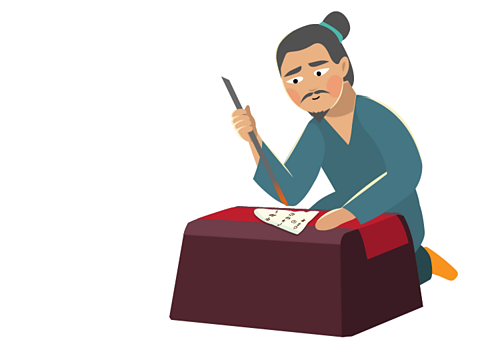
This is an axe made from bronze. It would have had a wooden handle and been used by the Shang warriors to fight enemies. It is now in the British Museum in London.
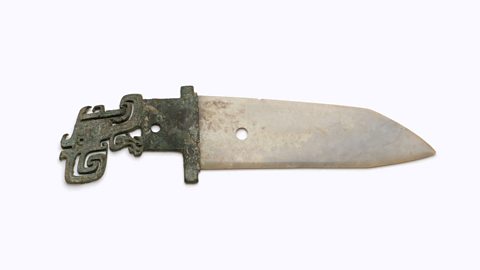
This is a ji - a type of spear. The blade is made from jade. This tells us that it was used in ceremonies but not in battle where stronger bronze weapons would be used. It would have had a long handle made from wood. It is part of the V&A's collection in London.

This is a ding made from bronze. It was used for ceremonies and to cook food. A fire would be lit between the three legs and the food was heated in the bowl. It is now kept in the British Museum.
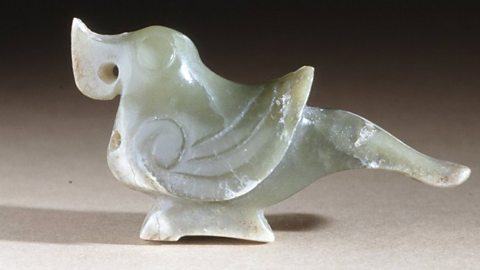
This sculpture is made of a stone called jade. Jade was used to make lots of things including jewellery and ornaments - like this bird. It can now be found in the British Museum.
What was happening in Britain?

More on Shang Dynasty
Find out more by working through a topic
What was it like to live in the Shang Dynasty?
- count 2 of 14
How did the Shang army win battles?
- count 3 of 14
Who did the Shang people pray to?
- count 4 of 14
What jobs did the Shang people do?
- count 5 of 14
- History Classics
- Your Profile
- Find History on Facebook (Opens in a new window)
- Find History on Twitter (Opens in a new window)
- Find History on YouTube (Opens in a new window)
- Find History on Instagram (Opens in a new window)
- Find History on TikTok (Opens in a new window)
- This Day In History
- History Podcasts
- History Vault
Shang Dynasty
By: History.com Editors
Updated: June 22, 2023 | Original: December 13, 2017

The Shang Dynasty is the earliest ruling dynasty of China to be established in recorded history, though other dynasties predated it. The Shang ruled from 1600 to 1046 B.C. and heralded the Bronze Age in China. They were known for their advances in math, astronomy, artwork and military technology.
Beginning of the Shang Dynasty
The earliest written records in Chinese history date back to the Shang Dynasty, which, according to legend, began when a tribal chief named Tang defeated the Xia Dynasty, which in 1600 B.C. was under the control of a tyrant named Jie.
This victory is known as the Battle of Mingtiao, fought during a thunderstorm. Jie survived the battle but died later of illness. Tang is known for establishing a low number of drafted soldiers in the army and for beginning social programs to help the kingdom’s poor.
Shang Dynasty Achievements
People of the Shang Dynasty are believed to have used calendars and developed knowledge of astronomy and math, thanks to inscriptions on tortoise shell that have been unearthed by archaeologists.
The Shang calendar was at first lunar-based, but a solar-based one was developed by a man named Wan-Nien, who established a 365-day year through his observations and pinpointed the two solstices.
Shang Dynasty artisans created sophisticated bronze works, ceramics and trinkets made from jade. Unlike their Bronze Age counterparts, artisans during the Shang Dynasty used piece-mold casting as opposed to the lost-wax method. This meant that they first made a model of the object they wanted to create before covering it in a clay mold. The clay mold would then be cut into sections, removed and re-fired to create a new, unified one.
By 1200 B.C., Shang armies were equipped with horse-drawn chariots. Before that, there is evidence of bronze-tipped spears, halberds (pointed axes) and bows.
The language of the Shang Dynasty is an early form of modern Chinese. Chinese characters first appeared during the Shang Dynasty inscribed on cattle bone and tortoise shells. There is evidence of two numerological systems, one based on numbers from one to 10 and the other from one to 12.
Shang Cities
During the Shang Dynasty, there were several large settlements, including Zhengzhou and Anyang, though these are not believed to be as densely urban as Mesopotamian settlements during the same time.
Anyang became the capitol around 1300 B.C. under King Pan Geng and at the time was called Yin. Zhengzhou is renowned for its walls, which ran for four miles and were 32 feet high and 65 feet thick.
Anyang is believed to be the city that Shang kings ruled from for more than two centuries, with altars, temples and palaces located at the center. Surrounding the political center were artisans comprising an industrial area of stone carvers, bronze workers, potters and others, and then small housing structures and burial sites.
Shang Dynasty Religion
Much of the history of the Shang Dynasty has been deciphered from oracle bones found in Anyang, which present a kingdom at war, with narratives of shifting alliances with other powers.
Prisoners of war were used as slaves or sometimes slaughtered for sacrifice. Within the religion, sacrifice was practiced, sometimes in large groups.
Within Shang culture, the king also functioned as a priest. It was believed that ancestors communicated through the god Di, and the Shang king led in the worship of Shangdi, considered the supreme ancestor, as well as communicating with the other ancestors. The wishes of the ancestors were received by a group of mystics and then interpreted by the king.
Shang Graves
In the first half of Shang rule, royal burials included the burial of subordinates in the chambers alongside their ruler. By the end of the dynasty, the number of bodies in each burial had risen. One grave in Anyang dating to around 1200 B.C. housed the unnamed ruler’s cadaver accompanied by 74 human bodies as well as horses and dogs.
Shang rulers would even send out hunting parties to capture members of primitive tribes to the northwest to use as sacrificial bodies in royal burial sites.
The Anyang grave of Lady Hao from around 1250 B.C. features not only 16 human sacrifices, including children, but a large number of valuable objects, including ornaments and weapons made from bronze and jade, stone sculptures, bone hairpins and arrowheads and several ivory carvings. The grave also includes 60 bronze wine vessels with images of animals.
Lady Hao is believed to be the wife of King Wu Ding, who ruled for 59 years. Bone inscriptions reveal that she lead several significant military campaigns in her life.
Fall of the Shang Dynasty
The Shang Dynasty came to an end around 1046 B.C. The final king in the Shang lineage, King Di Xin, was considered a cruel leader who enjoyed torturing people, leading to calls for the end of his rule.
Entrusted with an outpost to protect the western frontier of the kingdom, the Zhou army, lead by King Wu, marched on the capitol city. Di Xin armed nearly 200,000 slaves to supplement the defending army, but they defected to the Zhou forces. In what is known as the Battle of Muye, many Shang soldiers refused to fight the Zhou, some even joining the other side.
Di Xin committed suicide by setting fire to his palace. The incoming Zhou dynasty would rule for 800 years, though the Shang Dynasty had left an indelible mark on the timeline of Chinese history .
Cambridge Illustrated History of China. Patricia Buckley Ebrey . The Dynasties of China. Bamber Gascoigne . Early China: A Social and Cultural History. Li Feng . Early China and the Shang Dynasty: Columbia.edu . Shang and Zhou Dynasties: The Bronze Age of China; The MET .

HISTORY Vault
Stream thousands of hours of acclaimed series, probing documentaries and captivating specials commercial-free in HISTORY Vault

Sign up for Inside History
Get HISTORY’s most fascinating stories delivered to your inbox three times a week.
By submitting your information, you agree to receive emails from HISTORY and A+E Networks. You can opt out at any time. You must be 16 years or older and a resident of the United States.
More details : Privacy Notice | Terms of Use | Contact Us
- Ancient History
- Ancient China
Name: Class: WdB/ER Shang Dynasty Homework Grid: Yr 5, 5
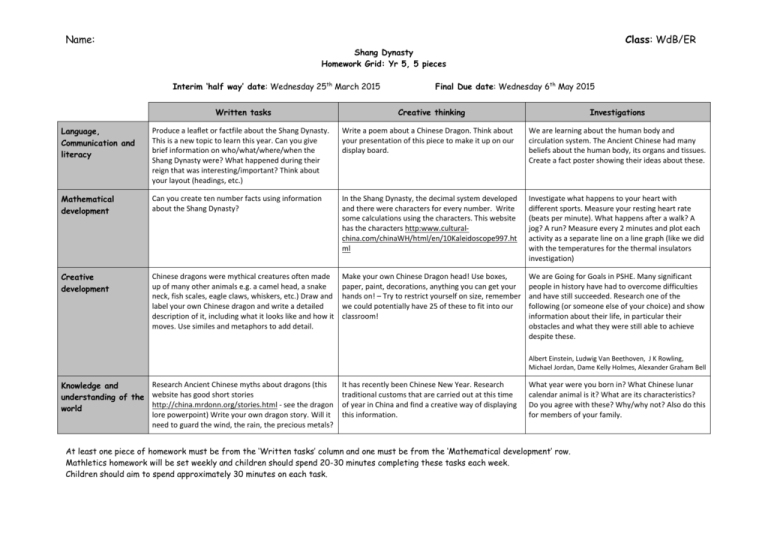
Related documents

Add this document to collection(s)
You can add this document to your study collection(s)
Add this document to saved
You can add this document to your saved list
Suggest us how to improve StudyLib
(For complaints, use another form )
Input it if you want to receive answer
Stanford University

SPICE is a program of the Freeman Spogli Institute for International Studies.
The Shang Dynasty, 1600 to 1050 BCE

Because the Three Dynasties’ civilization occupied the Yellow River valley, this geographic area is often called the birthplace or cradle of Chinese civilization. While this is true in some regard, one must keep in mind that the Shang was but one of several contemporary civilizations in China. 1 It may have been the only one with written records, but that does not mean it was the only one in existence. More recently discovered archaeological sites far away from the Yellow River valley reveal distinctly different cultures from the Shang, and scholars are now trying to determine how much these cultures influenced each other.
Oracle Bones
Before the discovery of the Shang oracle bones and the interpretation of their inscriptions and bronze inscriptions, scholars had no firm proof that the Shang Dynasty existed. Up to that point, Shang history had been based heavily on historical accounts written long after the Shang period ended. Shang bronze inscriptions were usually very short. With so little information, scholars questioned whether the dynasty even existed. The information and details inscribed onto oracle bones matched what was recorded in texts written centuries later, thereby providing the evidence scholars needed. The oracle bone inscriptions and the bronze inscriptions mark the beginning of written Chinese history.
The king or professional diviners hired by the king used oracle bones to make predictions about the future or to answer questions such as, “Will the king have a son?”, “Will it rain tomorrow?”, “If we send 3,000 men into battle, will we succeed?”, or even “Is the long drought caused by ancestor X?” 2 The scribe carved the question onto a bone (most often the shoulder bones of water buffalo or other cattle) or a tortoise plastron. 3 On the other side of the bone or plastron he would carve a number of small pits. He then inserted a hot metal rod into these pits until the bone cracked; and the king or diviner interpreted the cracks. Then, on the other side of the bone, the scribe carved the answer and the eventual outcome.
By analyzing oracle bone inscriptions, other artifacts, and archaeological sites such as tombs and ancient cities, scholars have been able to piece together many details of Shang civilization. They have confirmed the names of its kings, its style of government, its military history, its religious beliefs and rituals, and its society.
The Kingdom
According to legend, the Shang Dynasty was founded sometime around 1600 BCE by a virtuous man named Cheng Tang, who overthrew the evil king of the legendary Xia. The Shang Dynasty was a monarchy governed by a series of kings, 29 or 30 in total, over the course of almost 600 years. 4 The king was served by officials who held specialized positions of authority and function; and the officials belonged to a hereditary class of aristocrats, usually related to the king himself. 5
While the king lived in and ruled from a capital city, it wasn’t always the same city. Although historical records mention many different Shang capitals, only a few have actually been confirmed with archaeological evidence. No one knows exactly why a king would move the capital but some scholars think it had to do with internal power struggles within the royal family.
Cheng Tang is said to have established the dynasty’s first capital at a town called Shang (near modern-day Zhengzhou), but later kings moved the capital many more times, the last being a place called Yin (near modern-day Anyang). Archaeological evidence suggests that the town of Shang was the ancestral capital of the dynasty that remained in a fixed location throughout the dynasty. It was where the Shang kings kept their most sacred ancestral temples, tablets, and regalia. The political capital was where the kings lived and ruled from. While the political capital moved many times during the dynasty, the ancestral capital never moved. 6
The core of the dynasty was located in the northern part of modern-day Henan province, in a triangular area between the cities of Anyang, Luoyang, and Zhengzhou, the latter two of which are on the Yellow River. In addition to uncovering the remains of several Shang cities, archaeologists have found huge tombs of many Shang kings and their families. Even though the dynasty was centered in this area, its culture reached places much farther away.
As the oracle bones and other artifacts and records revealed, the Shang kings were constantly at war with outsiders near and far. Many of the oracle bones bore questions related to battles, such as the outcome of a future battle or how many men to send into battle. The king sent out armies of as many as 13,000 men to fight battles on behalf of the kingdom. Victorious armies brought back prisoners of war—as many as 30,000 at a time—who either became laborers or ritual sacrifices. 7 The armies also helped gain new territories and bring back precious resources for the kingdom.
The Shang worshipped the “Shang Di,” who was the supreme god that ruled over the lesser gods of the sun, the moon, the wind, the rain, and other natural forces and places. 8 They also worship8ped their ancestors because they believed that although their ancestors lived in heaven after their death, they were still actively involved in the affairs of family and descendants. The kings communicated with their ancestors using oracle bones and made frequent sacrifices to them. As in many other societies, they sacrificed animals to royal ancestors and to various nature gods, 9 using sacrifices to ask the ancestors or gods for help and to feed the ancestors or gods to keep them strong. 10 They believed that if they failed to properly worship their ancestors, their family and the kingdom would experience many disasters.
Because the Shang believed in the afterlife and ancestor worship, they thought very seriously about burial and what was to accompany the deceased to his or her grave. The vast and elaborate tombs of the Shang royal family are signs of their strong beliefs. Among the many treasures buried in important people’s tombs were the remains of many other people. Some were nameless individuals who had been captured during battle and used as human sacrifices at burials. Others were relatives or lower-ranking dependents of the deceased. This practice of burying lower-ranking people reflected the Shang’s belief that those related to a king or lord by blood or service in life were expected to continue that relationship in death. 11
Shang Contributions to Chinese Civilization
The Shang made many contributions to Chinese civilization, but four in particular define the dynasty: the invention of writing; the development of a stratified government; the advancement of bronze technology; and the use of the chariot and bronze weapons in warfare.
The Invention of Writing The oracle bone inscriptions are the oldest known form of Chinese writing. By comparing and equating the inscriptions to modern Chinese characters, scholars have shown that the Shang had already developed all the principles of the modern writing system used today. In fact, Chinese writing has undergone relatively few changes since it was first developed 3,500 years ago.
Since Shang documents were originally recorded on strips of bamboo and silk that have long since decomposed, the oracle bones and bronze inscriptions bear the only written history from the Shang era. Since Shang bronze inscriptions were very short and did not say much, most of what is known about the Shang Dynasty is from the oracle bones. Toward the end of the Shang, writing was also inscribed on bronze objects.
A Stratified Government and Society The Shang political system was organized into a hierarchy, meaning that it had many levels of rank and many specialized functions and jobs, all passed down within a noble family. Shang society was also hierarchical with many different levels of social rank.
The invention of writing had a profound effect on Shang government and its ability to rule. It increased the government’s ability to organize on a large scale, whether it be to oversee a hierarchical administration; rule the state’s many territories; organize the mining of large quantities of ore for bronzework; wage large military campaigns; construct city walls and palaces; or build elaborate tombs for themselves.
Bronze Technology The Shang Dynasty existed during China’s bronze age. At that time, bronze represented power, wealth, and luxury. By looking at the way bronze was used by the Shang, it is clear that only those with any degree of power in the kingdom had access to using bronze objects. Shang bronzes fall into two categories: weapons or ceremonial vessels for food and wine. By far, most of the pieces are ceremonial vessels and speak of a society and culture that valued rituals, such as rituals for burial, celebration, and worshipping gods and ancestors. Bronze was not used for common tools, such as hammers or hoes.
Archaeologists have dug up thousands of Shang bronze pieces, ranging from small objects to huge food and wine vessels weighing as much as 2,000 pounds. The artistry and workmanship of the bronze pieces reveal the Shang’s mastery of bronze technology. The Shang perfected a technique known as piece-mold casting, a complicated process that involved creating a mold out of clay; carving a design into it; pouring molten bronze into the mold; cracking the mold away; and adding handles as a final step. The actual shape, design, and decoration of ritual vessels changed over time according to changing importance of rituals and belief systems.
The Use of the Chariot and Bronze Weapons in Warfare The advancement of bronze technology and the use of bronze weapons gave the Shang military great advantage over their enemies and completely changed the way they fought wars. They used newly-developed weapons like the bronze-tipped halberd and spear, the compound bow; and most importantly, they used horse-drawn chariots.
The chariot, which had most likely been introduced from western Asia, completely changed the way battles were fought. Chariots allowed commanders to supervise their troops efficiently and across great distances. They also gave soldiers a significant edge over their opponents by making them highly mobile and fast. Since war was central to life during the Shang Dynasty, these developments in weapons were very important in allowing the Shang to maintain its military supremacy.
The End of the Shang
The Shang Dynasty ended in about 1050 BCE, when conquerors from the state of Zhou invaded the capital and successfully toppled the Shang Dynasty. The Zhou conquerors claimed to overthrow the Shang Dynasty for moral reasons. They said that the Shang king was evil and that heaven no longer wanted him to rule. They blamed the Shang’s downfall on its king’s excessive drinking, indulgent lifestyle, and immoral behavior. The downfall remained a cautionary tale to kings and emperors for years to come.
- Michael Loewe and Edward L. Shaughnessy, editors, The Cambridge History of Ancient China: From the Origins of Civilization to 221 B.C. (Cambridge: Cambridge University Press, 1999), 14.
- Charles O. Hucker, China’s Imperial Past: An Introduction to Chinese History and Culture (Stanford, CA: Stanford University Press, 1975), 29.
- David N. Keightley, Sources of Shang History: The Oracle Bone Inscriptions of Bronze Age China (Berkeley, CA: University of California Press, 1978), 6.
- Kwang-Chih Chang, Shang Civilization (New Haven CT: Yale University Press, 1980), 6; David N. Keightley, “The Shang: China’s First Historical Dynasty,” in The Cambridge History of Ancient China: From the Origins of Civilization to 221 B.C. , edited by Michael Loewe and Edward L. Shaugnessy, (Cambridge: Cambridge University Press, 1999), 232.
- Hucker, 30.
- Chang, 212.
- Chang, 194.
- Richard Hooker, “Ancient China: The Shang” (1996), , 1.
- Patricia Buckley Ebrey, Cambridge Illustrated History: China (Cambridge, UK: Cambridge University Press, 1996), 25.
- Keightley, “The Shang: China’s First Historical Dynasty,” 286.

IMAGES
VIDEO
COMMENTS
1. Make a model of a Chinese dragon out of recycled material. 2. Create your own Shang Dynasty bunting. Put information about various aspects of the Shang Dynasty on each flag. 3. Find out about and describe people's ideas and imagery of dragon's from the Shang Dynasty. 4.
The Shang Dynasty was the first recorded Chinese dynasty for which there is both written and archaeological evidence. Historians think that the Shang ruled from 1766 to 1122 bc . The Shang created one of the earliest advanced civilizations in East Asia.
The Shang Dynasty was the first Chinese dynasty for which we have written and archaeological evidence. Most historians now date the dynasty from 1600-1046 BC when it was succeeded by the Zhou Dynasty. The Shang Dynasty was centred around the Yellow River in North East China but moved its capital on a number of occasions.
Shang Dynasty Activities. Make a model of a Chinese dragon out of recycled material. This paper dragon activity would be a great way to start! Create your own Shang Dynasty bunting. Put information about various aspects of the Shang Dynasty on each flag. Find out about and describe people's ideas and imagery of dragon's from the Shang Dynasty.
Bronze Battle Axe Shang dynasty—1600 to 1046 BCE—Excavated at Yidu, Shangdong Province, 1956. This axe was used in hand-to-hand combat and was also a ritual object symbolizing power and military authority. The tomb it came from likely belonged to a man of wealth and influence.
KS2 History Shang Dynasty learning resources for adults, children, parents and teachers.
This lesson addresses the question of how farmers were able to irrigate their crops to provide enough food. Pupils will be introduced to the legend of Yu the Great and will consider his influence on the Shang Dynasty. They will learn what kind of food people ate in Shang times and try out a Shang recipe for Ginger Millet Porridge.
What was the Shang Dynasty? Discover all about this ancient Chinese civilisation with this guide filled with facts, activities and useful resources. Recently Viewed and Downloaded ›
The Shang people made advances in areas such as weaponry and astronomy. Their language was an early form of Chinese. Two number systems were used during the time of the Shang dynasty; one based on the number 10 and the other on the number 12. Teach your children about the Shang Dynasty using our handy topic guide!
Over 950,000++ printables, lesson plans, assessments, interactive activities, games, activity packs, PowerPoints, teaching ideas at Twinkl! What was the Shang Dynasty? Discover all about this ancient Chinese civilisation with this guide filled with facts for kids, activities and useful resources.
In the 14th century bc the dynasty settled at Anyang. The Shang were overthrown in the 11th century bc by the neighboring Zhang people. During the Shang period the king appointed local governors, and there was an established class of nobles. The masses worked chiefly in agriculture. The king made pronouncements as to when to plant the crops.
KS2History: Shang Dynasty. Planning and resources for the KS2 topic The Shang Dynasty. Find lesson planning, books, info guides, resources, curriculum ideas, videos and more...
The Shang Dynasty ruled part of China between 1600BC and 1046BC. Find out more about the Shang people in this year 5/6 BBC Bitesize primary history guide.
The Shang Dynasty ruled China from 1600 to 1046 B.C. and left a record of advancements in the fields of math, astronomy, art and military technology.
In Y4 Children work through their times tables at their own pace, please check the grids in the back of homework books for the timetables your child should focus on each week. Y5 will need to practise all of their times tables 2-12. Spelling Please practise the spellings sent home each Tuesday on the sheet provided.
The Shang dynasty was the reputed successor to the quasi-legendary first dynasty, the Xia ( c. 2070- c. 1600 bce ). The dates given for the founding of the Shang dynasty vary from about 1760 to 1520 bce, and the dates for the dynasty's fall also vary, from 1122 to 1030 bce. The period of the dynasty's rule has traditionally been dated ...
The Ancient Chinese had many beliefs about the human body, its organs and tissues. Create a fact poster showing their ideas about these. Mathematical development Can you create ten number facts using information about the Shang Dynasty? In the Shang Dynasty, the decimal system developed and there were characters for every number.
The Shang dynasty lasted from around 1600 BCE until 1046 BCE, and it was spread across a large area between the Yangtze and Yellow Rivers. This important Bronze Age civilisation made many important advancements in science, technology, art and mathematics. The earliest examples of Chinese writing also came from the Shang Dynasty.
The Kingdom. According to legend, the Shang Dynasty was founded sometime around 1600 BCE by a virtuous man named Cheng Tang, who overthrew the evil king of the legendary Xia. The Shang Dynasty was a monarchy governed by a series of kings, 29 or 30 in total, over the course of almost 600 years. 4 The king was served by officials who held ...
This resource contains 6 planned and fully resourced lessons all about the Shang dynasty. In the first lesson, the children explain when and where the Shang dynasty was in existence and describe features of its location. In the second lesson, children describe how the social hierarchy of the Shang dynasty was organised and what life was like for different people. In the third lesson, children ...
The Shang Dynasty is the first Chinese dynasty that we have archaeological evidence of. The Shang Dynasty was from 1600 to 1046 BC. The Shang were known for their amazing discoveries. During their reign, there were developments in maths, art, and astronomy.Things like writing, organised government, bronze working, chariot, and weapons were invented during the time of the Shang.